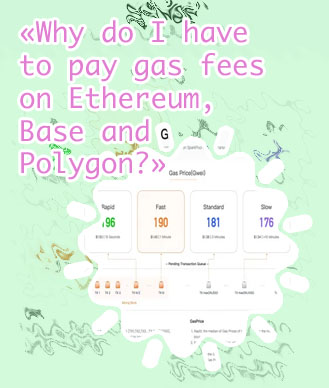
| Join | Login | ||

|
Eth current gas fees |
|
|
Navigating the high gas fees on the Ethereum network can be a daunting task for users and developers alike. To help address this issue, we have compiled a list of three articles that provide valuable insights and solutions to mitigate the impact of current gas fees. From strategies to optimize gas usage to exploring alternative layer 2 solutions, these articles offer practical advice to help navigate the challenges posed by high gas fees on Ethereum. 5 Tips to Reduce Gas Fees on the Ethereum Network
As the popularity of cryptocurrencies continues to rise, so do the gas fees on the Ethereum network. For many users, these fees can become a significant barrier to entry when it comes to participating in the decentralized finance (DeFi) space. However, there are several tips that can help reduce these gas fees and make transactions more affordable for all users. One tip is to avoid peak hours when the network is congested, as this can lead to higher fees. By monitoring the network and choosing to transact during off-peak times, users can save a significant amount on gas fees. Another tip is to use layer 2 solutions such as Loopring or Polygon, which can help reduce the cost of transactions while still maintaining the security of the Ethereum network. Additionally, users can batch their transactions together to save on gas fees, as each transaction incurs a separate fee. By bundling multiple transactions into one, users can reduce the overall cost of their transactions. Finally, users can also consider using gas limit and gas price strategies to optimize their fees and ensure that they are not overpaying for transactions. Overall, these tips can help users navigate the high gas fees on the Ethereum network and make participating in DeFi more accessible for all. By implementing these strategies, users can save money Exploring Layer 2 Solutions for Lower Gas Fees on EthereumLayer 2 solutions have emerged as a promising way to address the issue of high gas fees on the Ethereum network. These solutions aim to improve scalability and reduce transaction costs by moving some of the processing off the main chain. By doing so, Layer 2 solutions can significantly increase the speed and efficiency of transactions while keeping the security and decentralization of the Ethereum network intact. One of the most popular Layer 2 solutions is the Rollup technology, which allows for bundling multiple transactions into a single batch before submitting them to the main chain. This batching process helps to reduce the overall load on the Ethereum network and, as a result, lowers gas fees for users. Another key benefit of Rollups is their compatibility with existing smart contracts, making integration seamless and straightforward. In addition to Rollups, Optimistic and ZK-Rollups are also gaining traction as effective Layer 2 solutions for Ethereum. These technologies leverage different approaches to achieve scalability and cost reduction, providing users with a variety of options to choose from based on their specific needs and preferences. Overall, Layer 2 solutions offer a promising path forward for addressing the scalability challenges of the Ethereum network and reducing gas fees for users. As the ecosystem continues to evolve, it is essential for developers and users alike to stay informed about Understanding Gas Fees: A Comprehensive Guide for Ethereum UsersGas fees are a crucial aspect of using the Ethereum network, and understanding how they work is essential for all users. This comprehensive guide provides a detailed explanation of gas fees on the Ethereum platform, covering everything from what they are to how they are calculated. One of the key concepts to grasp when it comes to gas fees is that they are the cost of executing transactions on the Ethereum network. This cost is determined by the network's demand for processing power, with higher demand leading to higher fees. Gas fees are paid in Ether, the native cryptocurrency of the Ethereum network. The guide also delves into the factors that influence gas fees, such as the complexity of a transaction and the current network congestion. It provides tips on how users can optimize their gas fees, such as setting the right gas limit and gas price for their transactions. Moreover, the guide offers insights into the history of gas fees on the Ethereum network, including notable events that have impacted fee levels. It also highlights the role of famous figures in the Ethereum community who have contributed to the discussion around gas fees. In conclusion, this guide is a valuable resource for Ethereum users looking to navigate the complex world of gas fees. By providing a comprehensive overview of the subject, it equips users with the knowledge they need to make informed |
|
© 2014 BTC Surf best cryptocurrency exchange all rights reserved worldwide